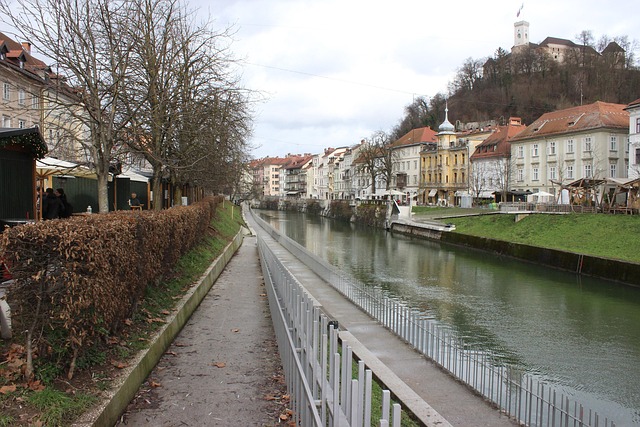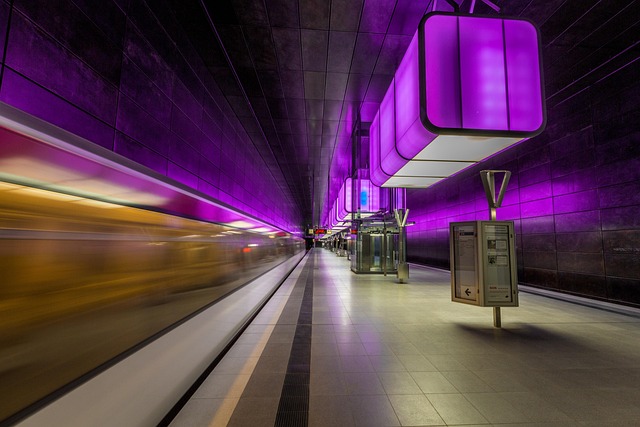Karachi, Pakistan's bustling metropolis, faces severe air pollution challenges due to high population density and industrial activities. The Air Quality Index (AQI) serves as a critical tool for residents to understand and combat this issue, with lower AQI values indicating better air quality. By monitoring daily AQI levels, citizens can make informed decisions about outdoor activities and contribute to improving Karachi's air quality, particularly in areas like Gadap Town. Local factors, including vehicular emissions, industrial discharges, weather conditions, and natural sources, impact air pollution, requiring a multi-faceted approach involving cleaner fuel sources, stricter emission standards, advanced filtration systems, sustainable practices, and public awareness campaigns.
“Uncovering Karachi’s Air Quality: A Focus on Gadap Town”
Karachi, Pakistan’s bustling metropolis, faces significant air pollution challenges, impacting its residents’ health and well-being. This article delves into the intricate details of the Air Quality Index (AQI) and its relevance to understanding urban air pollution. We explore Karachi’s current air quality scenario, with a specific lens on Gadap Town, analyzing local factors contributing to poor air days. Furthermore, practical strategies are presented to combat these issues, offering potential solutions for improving and maintaining healthy air in this vibrant part of Karachi.
- Understanding Air Quality Index: A Basic Guide
- Karachi's Air Pollution Challenges: Current Scenario
- Gadap Town: An In-Depth Look at Local Air Quality
- Factors Affecting Air Quality in Urban Areas
- Strategies for Improving and Maintaining Healthy Air in Karachi's Gadap Town
Understanding Air Quality Index: A Basic Guide

The Air Quality Index (AQI) is a crucial tool for understanding and communicating air pollution levels in cities like Karachi. It provides a standardized measure of air quality, making it easier for residents to gauge the safety of outdoor activities. The AQI ranges from 0 to 500, with lower values indicating better air quality. In Karachi, an AQI above 100 is considered moderate, prompting people to take precautions if they have respiratory conditions or are sensitive to pollution.
This index categorizes air quality into different levels of severity: good (0-50), moderate (51-100), unhealthy (101-150), very unhealthy (151-200), hazardous (201-300), and dangerous (>300). Local authorities and environmental agencies use the AQI to issue advisories, inform the public about pollution levels, and take measures to improve air quality in cities like Karachi. Staying informed about the daily AQI can help residents make informed decisions about their outdoor activities and contribute to collective efforts to combat air pollution.
Karachi's Air Pollution Challenges: Current Scenario

Karachi, Pakistan’s economic hub and one of the world’s most populous cities, faces significant air pollution challenges that have dire implications for its residents’ health and well-being. The city’s dense population, rapid urbanization, and industrial activities contribute to a complex mix of pollutants, leading to poor air quality. Vehicle emissions, factory releases, and construction dust are primary sources, exacerbated by open burning of waste and poorly managed solid disposal sites.
The current scenario in Karachi is alarming. Regular monitoring by the Pakistan Environment Protection Agency (EPDA) indicates that the city often exceeds safe air quality levels, particularly during the winter months when low winds and temperature inversions trap pollutants close to the ground. These conditions result in hazardous levels of particulate matter (PM2.5 and PM10), nitrogen oxides, and sulfur dioxide, posing risks not just to respiratory health but also to cardiovascular systems. The city’s iconic skyline is often shrouded in smog, reflecting the urgency for sustainable solutions to tackle this growing environmental crisis.
Gadap Town: An In-Depth Look at Local Air Quality

Gadap Town, a vibrant and bustling area in Karachi, has long been recognized for its lively atmosphere and diverse community. However, beneath this energetic surface lies an important environmental consideration: air quality. Understanding the local Air Quality Index (AQI) is crucial for both residents and visitors alike, as it provides valuable insights into the health of the air we breathe.
Karachi’s Gadap Town experiences varying air quality levels throughout the year, influenced by factors such as industrial emissions, vehicle traffic, and seasonal weather patterns. By closely monitoring the AQI, individuals can take proactive measures to protect their well-being. This includes staying informed about high pollution days, wearing masks when necessary, and adjusting outdoor activities accordingly. Such simple actions collectively contribute to a healthier environment for all residents of Gadap Town and the broader Karachi metropolitan area.
Factors Affecting Air Quality in Urban Areas

Air quality in urban areas, like Gadap Town in Karachi, is influenced by a myriad of factors. One of the primary contributors is vehicular emissions from the city’s dense traffic. With thousands of vehicles on the road daily, the release of pollutants such as nitrogen oxides, carbon monoxide, and particulate matter (PM2.5 and PM10) significantly impacts air quality. Industrial activities also play a role, especially in areas with heavy manufacturing or construction sectors, leading to the discharge of toxic substances into the atmosphere.
Additionally, weather conditions can exacerbate air pollution. For instance, during certain seasons, temperature inversions trap pollutants close to the ground, preventing dispersion. Wind patterns can also carry industrial emissions and dust from construction sites over long distances, affecting even seemingly distant neighbourhoods. Natural sources like wildfires contribute to smoke and particulate matter, while indoor activities, such as burning solid fuels for cooking or heating, further deteriorate air quality within residential areas of Karachi.
Strategies for Improving and Maintaining Healthy Air in Karachi's Gadap Town

To improve and maintain healthy air in Karachi’s Gadap Town, a multi-faceted approach is necessary. Residents can play an active role by adopting simple yet effective practices like using cleaner fuel sources for domestic cooking and heating, promoting electric vehicles, and ensuring proper waste management to reduce emissions from landfills. Planting more trees and creating green spaces within the community can significantly contribute to filtering pollutants and enhancing air quality.
Local governments and organizations should collaborate on implementing stricter emission standards for industries and vehicles operating in Gadap Town. This includes promoting the use of advanced filtration systems, encouraging the adoption of sustainable practices, and enforcing regular environmental audits. Additionally, public awareness campaigns can educate residents about the impact of air pollution and inspire collective action to create a cleaner, healthier environment for all Karachiites.
Karachi, as a bustling metropolis, faces significant air pollution challenges, but with an understanding of the Air Quality Index (AQI) and targeted strategies, progress can be made. This article has provided an in-depth look at Gadap Town’s local air quality issues, highlighting various factors affecting urban areas’ AQI. By implementing effective solutions, such as promoting renewable energy, enhancing industrial regulations, and encouraging public transportation, Karachi’s Gadap Town can strive for healthier air, improving the lives of its residents and reducing the environmental impact. These strategies are vital steps towards a greener and more sustainable future for this vibrant city.



